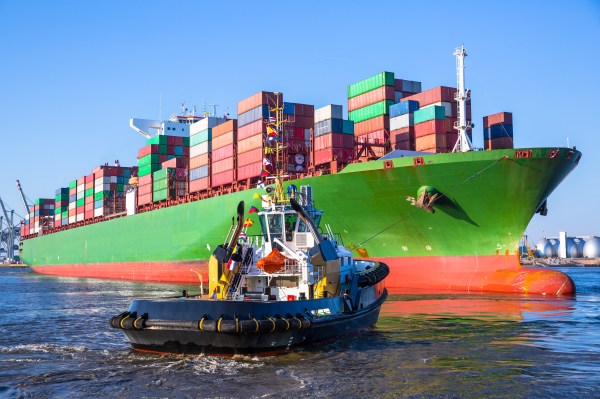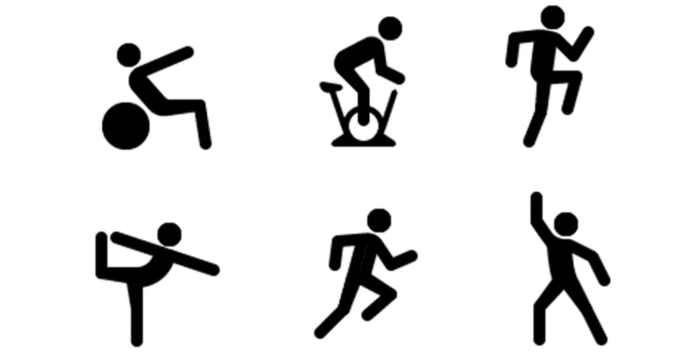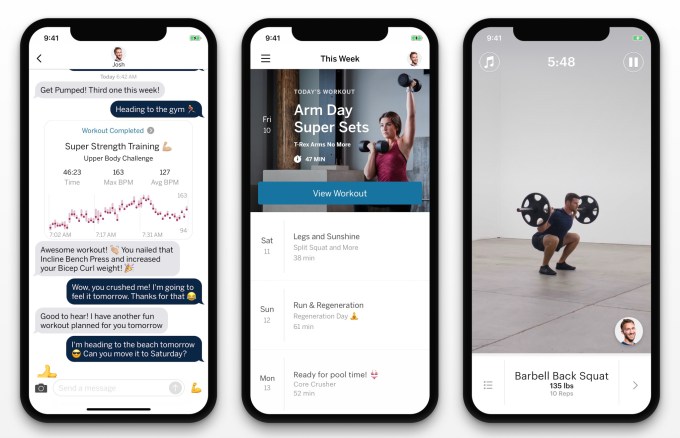Music
Trailers
DailyVideos
India
Pakistan
Afghanistan
Bangladesh
Srilanka
Nepal
Thailand
Iraq
Iran
Russia
Brazil
StockMarket
Business
CryptoCurrency
Technology
Startup
Trending Videos
Coupons
Football
Search
Download App in Playstore
Download App
Best Collections
Technology
The number of COVID-19 cases in the U.S. crossed 1,000 on Tuesday as President Donald Trump met with the nationlargest insurers and members of his cabinet to discuss how to pay for treatment and lessen the financial blow of the diseasespread.
With the nationhealthcare apparatus beginning to get a better understanding of the proliferation of the virus that causes COVID-19 within its borders, efforts have shifted fully from containing the diseasespread to stopping the contagion from getting worse.
&What we would like the country to realize is that as a nation we can&t be doing the kinds of things we would be doing a few months ago,& said Dr. Anthony Fauci, head of the National Institute of Allergy and Infectious Diseases, during the daily briefing from the PresidentCoronavirus Task Force. &It doesn&t matter if you&re in a state that has no cases or one case, you have to start taking seriously what you can do now, if and when the infections will come, and they will come.&
The government and private testing facilities Quest and LabCorp are quickly distributing new test kits, with the expectation that 5 million will be made available by the end of the week. The availability of testing means that more cases will be diagnosed and efforts will be made to limit the spread in the new clusters as they&re identified.
However, that rollout might be hampered by a potential shortage of a critical component of the tests — the &RNA extraction& kits, first reported by Politico earlier on Tuesday.
&RNA extraction is the first step in being able to perform& a COVID-19 test, Michael Mina, associate medical director of molecular diagnostics at Brigham and WomenHospital in Boston told Politico. &If we cannot perform this step, the [coronavirus] test cannot be performed.&
More roadblocks to testing could limit the identification of clusters of the virus that causes COVID-19 and stop governments from taking the kinds of dramatic action that medical professionals think could be necessary to mitigate the spread of the virus.
&When you have community spread you&re going to ratchet up the kinds of mitigations that you have,& said Fauci. &Everyone should be saying all hands on deck. This is what we need to be doing.&
In New York state thatmeant establishing a containment zone around New Rochelle, a city that has been the focal point for the diseasespread in the region.
That mitigation strategy looks like an extreme version of the steps that Dr. Scott Gottlieb, the former Food and Drug Administration chief recommended over the weekend.
Meanwhile, more companies made calls for remote work for their employees and took steps to shield their workers from financial hardship caused by the disease — either through illness or because of the mitigation strategies imposed by the companies themselves. Their commitments come as President Trump and his economic advisors move forward with a stimulus package to boost the economy and provide a safety net for companies that are paying for workers& time off.
Earlier in the day in a briefing at the White House, Vice President Mike Pence outlined the steps that insurance companies would be taking to ensure that patients receive the treatment they need.
&All the insurance companies here — either today or before today — have agreed to waive all copays on coronavirus testing and extend coverage for coronavirus treatment in all of their benefit plans,& Vice President Pence said. Last week the government said that Medicare and Medicaid beneficiaries would have their testing and treatment covered.
&They&ve also agreed to cover telemedicine so that anyone, particularly among the vulnerable senior population, would not feel it necessary to go to a hospital or go to their doctor,& said Pence. &They&ll know that telemedicine is covered.&
And for tech companies like Instacart, Postmates, Alphabet, Microsoft, Amazon, Salesforce, and Facebook, which have all committed to paying for hourly workers sickened by the virus or who have lost work due to office closures, the Federal government may provide some financial assistance (not that the tech companies need it).
Following up on the commitment made yesterday, Director of the United States National Economic Council Larry Kudlow said at Tuesdaybriefing that the administration is putting together a proposal for a payroll tax cut and tax deferrals for small and medium-sized businesses who are impacted by the spread of COVID-19.
Technology companies and the billionaires that own them are also chipping in to help local communities and finance initiatives looking for new diagnostics to identify the disease and treatments for the sick.
Earlier today, Amazon announced a $5 million initiative to help local businesses affected by the outbreak of COVID-19 in Seattle, while the Gates Foundation committed $50 million to a $125 million effort to develop treatments.
Still, executives at startups operating clinics in geographies affected by the virus that causes COVID-19 are saying that the infrastructure is not yet in place to adequately and effectively diagnose and treat the disease.
&Testing isn&t being done widely,& said one executive at a startup that runs a network of clinics and urgent care centers. &The supplies in the country are just very limited right now.&
- Details
- Category: Technology Today
Read more: As national COVID-19 cases top 1,000, insurers waive treatment fees and US preps stimulus
Write comment (96 Comments)
Hitachi Vantara, the wholly owned subsidiary of Hitachi that focuses on building hardware and software to help companies manage their data, today announced that it has acquired the assets of Containership, one of the earlier players in the container ecosystem, which shut down its operations last October.
Containership, which launched as part of our 2015 Disrupt New York Startup Battlefield, started as a service that helped businesses move their containerized workloads between clouds, but as so many similar startups, it then moved on to focus solely on Kubernetes and helping enterprises manage their Kubernetes infrastructure. Before it called it quits, the companyspecialty was managing multi-cloud Kubernetes deployments. The company wasn&t able to monetize its Kubernetes efforts quickly enough, though, the company said at the time in a blog post that it has now removed from its website.
&Containership enables customers to easily deploy and manage Kubernetes clusters and containerized applications in public cloud, private cloud, and on-premise environments,& writes Bobby Soni, the COO for digital infrastructure at Hitachi Vantara. &The software addresses critical cloud native application issues facing customers working with Kubernetes such as persistent storage support, centralized authentication, access control, audit logging, continuous deployment, workload portability, cost analysis, autoscaling, upgrades, and more.&
Hitachi Vantara tells me that it is not acquiring any of Containershipcustomer contracts or employees and has no plans to keep the Containership brand. &Our primary focus is to develop new offerings based on the Containership IP. We do hope to engage with prior customers once our new offerings become commercially available,& a company spokesperson said.
The companies did not disclose the price of the acquisition. Pittsburgh-based Containership only raised about $2.6 million since it was founded in 2014, though, and things had become pretty quiet around the company in the last year or two before its early demise. Chances are then that the price wasn&t all that high. Investors include Birchmere Ventures, Draper Triangle and Innovation Works.
Hitachi Vantara says it will continue to work with the Kubernetes community. Containership was a member of the Cloud Native Computing Foundation. Hitachi never was, but after this acquisition, that may change.
- Details
- Category: Technology Today
Read more: Hitachi Vantara acquires what’s left of Containership
Write comment (90 Comments)The coronavirus pandemic continues to spread with no signs of abating. Over 100,000 cases have been confirmed in almost 100 countries across the globe as of this writing. Some 4,000 deaths have been reported, 80% of which occurred in mainland China.
Preventive measures taken by the public sector and by global industryare already having widespread effects. In the past several days, Italy hasofficially imposeda whole-country lockdown and in the U.S., epicenter states such asCaliforniaandNew Yorkhave declared emergency status while instituting lockdowns on high-risk districts such asNew Rochelle. Last week, the OECD cut global economic growth projections by half, and the JPMorgan Global Manufacturing Purchasing ManagerIndex (PMI) fell to its lowest level since 2009. Numerous companies including Apple and Nvidia have reported underwhelming earnings in recent quarters and have proceeded to cut their earnings guidance for the foreseeable future.
These economic impacts are in part related to disruption in demand for goods, due to quarantines and travel restrictions. However, more nefariously, economic pundits have expressed concern for supply-side disruptions: including staff productivity losses, supply-chain dysfunction, and facility closures.
According to a Dun - Bradstreet whitepaper released this week, 94% of Fortune 1000 companies have key elements of their supply chain housed directly within the epicenter of the outbreak in China. Supply-side shocks are much more difficult for central banks to contain by moves such as interest-rate cuts or financial stimulus. These typically serve to catalyze demand (through increased cash or borrowing power), but do not directly alleviate the kind of production paralysis capable of hamstringing global commerce.
How these preventive measures implicate startups
Startups are especially vulnerable to such supply-side disruptions, each of which is worth considering independently.
Decreases in staff productivity
Operating through lean organizational structures in which personnel often occupy cross-functional roles, decreases in staff productivity can create significant issues for interdependent activities at startups. The diversion of attention — due alternatively to the need to attend to personal needs (such as family caregiving, healthcare issues, or household concerns) or societal requirements (such as monitoring the development of the virus and state or federal reactions to it) — can make a cumulative impact over the days, weeks, and months of the outbreak.
The increased frequency of absences to attend to personal issues (such as individual healthcare or childcare amidst school closings) likewise presents a major challenge to fulfillment of contracts and other business obligations for startups. A CNBC survey conducted two weeks ago found that some 40% of companies had &stranded employees& facing some form of hurdle to commuting to the workplace. These figures are likely higher today.
Moreover, increased frequency of absences can be accompanied by heightened utilization of benefits (such as healthcare, sick leave, or family leave) in a short period, which startups may or may not have sufficient liquidity to support. These considerations around benefits are especially tenuous for startups in the gig economy, who may need to compensate affected employees regardless of their ability to perform tasks.
Supply-chain dysfunction
Turmoil in supply chains can bear significant consequences for startups across a diverse range of sectors, including technology and healthcare. This is especially the case given that these supply chains tend to be concentrated through only a selected group of vendors.
Since China is the worldlargest producer of industrial goods (in particular, basic parts), often at the worldlowest prices, the widespread quarantines in the region are already proving debilitating: the number of bulk freight shipments has fallen over 70% since January and some 40% of Chinatrucking capacity remains offline. And while American companies have sought to diversify away from China in recent years (partially due to political rhetoric), as the viral outbreaks spread to other major manufacturing countries (such as Vietnam, Bangladesh, and Mexico), supply chains for instrumental parts will likely face shortages, delays, and quality compromises.
In terms of services, startups often depend on regulatory, legal, and industrial collaborators for deliverables that are a prerequisite to their doing business. Disruptions in this &soft& supply chain capable of delaying essential credentialing, contracting, or data acquisition can prove incapacitating for startups. Furthermore, the proliferation of outsourcing (on the order of 14 million jobs in 2015) in service supply chains for critical tasks such as customer service and administrative workflows implies another dimension of vulnerability for service provision.
For either goods or services supply chains, to the extent that startups have relatively undiversified revenue streams — from a single or small group of contracts — these various forms of supply chain bottlenecks can be crippling (of basic fulfillment) in the short-run and compromising (of scaling and reputation) in the long-run.
Facility closures
Lastly, startups ought to consider the impact that closing and/or restricting their facilities can have on their performance.
Recent guidelines from the Centers for Disease Control (CDC) and Occupational Safety and Health Administration (OSHA) include recommendations for employers to develop &infectious disease outbreak response plans& that may require office/factory closures. Already, employers across the US are preparing for &social distancing measures& that are, overnight, converting physical workforces into virtual ones.
With the acceleration of community spread leading to diffusion of the virus out beyond US urban centers effected thus far (namely, New York City and San Francisco), more and more startups residing in neighboring suburbs may face closing their workplace.
Steps stakeholders in startups can take to provide stability
Taken together at face value, these supply-side considerations can seem overwhelming for startups already facing innumerable daily &fires& that need extinguishing. However, there are a variety of steps that CEOs, funders, and partners/clients of startups can take to inoculate themselves against the exogenous threat posed by coronavirus.
Startup CEOs ought to consider operational, organizational, and financial workarounds.
Operationally, they can take steps to prepare for a virtual workplace by establishing clear methods of digital communication and metrics to ensure productivity. They can also prepare for an &interrupted& workplace (in which employees require more time than usual for personal affairs and may be otherwise preoccupied) by embracing asynchronous workflows, laying out clear priorities for deliverables, and providing flexibility beyond standard office hours.
Organizationally, CEOs can cross-train employees and develop clear workflow protocols to insulate against staffing deficits that may arise. To fortify their organizational strategies, CEOs can identify weak points and/or major dependencies in their supply chains. In turn, they can seek to hedge against these where possible: either through delegation to additional firms or through integration internally.
Financially, to the extent possible, CEOs can shift their business models to prioritize revenue over growth in the short-run, ensuring liquidity against unexpected supply or demand shocks. This can be achieved through cost reduction or signing small-scale contracts (rather than &pursuing Moby Dick&). Alternatively, CEOs can consider raising anticipatory funding, even if in the ideal world they might defer a raise in pursuit of higher valuations.
Funders of startups are likewise well positioned to buffer against the fever state of startups. Providing leadership for early, anticipatory fundraising can support the stockpiling of dry powder to survive a prolonged siege by coronavirus (due, for example, to structural changes to the supply chain in the wake of the pandemic). It can also promote the creation of a war chest to allow startups to adapt under these abnormal circumstances.
Additionally, funders can leverage their expertise and networks to share learnings on dealing with similar challenges — therefore cultivating an ecosystem of resilience for potentially inexperienced leaders during the tumult associated with coronavirus.
Finally, partners and clients of startups have an important supporting role to play. It is very much in their own interest to ensure the vitality of startups upon which they depend: to avoid the costs of restructuring their own business models should a startup partner/vendor go defunct, and to empower their own innovation pipelines. As such, partner and client companies are well positioned renegotiate contractual terms to facilitate short-term flexibility while also ensuring long-term performance. Alternatively, they can redesign incentives and milestones in a way that can provide operational and financial security to startups for the time being without sacrificing the overall value expected in the more distant horizon.
Surviving coronavirus can bolster the immune systems of startups in the future
The coronavirus pandemic is likely to strain the capabilities of startups for the foreseeable future. Supply-side disruptions will present distinctive challenges to startups unlike those that typically crop up in a globalized economy.
Nonetheless, through keen vigilance, rapid adaptation, and comprehensive contingency planning, startups can survive the impending stress test. And in so doing, like white blood cells after a severe infection, surviving startups can develop resistance against the subsequent challenges they will inevitably face in their lifetimes.
- Details
- Category: Technology Today
Read more: How the coronavirus outbreak will stress-test startups
Write comment (92 Comments)Fitness, wallpaper, and lost item-finding startups could have a big new competitor baked into everyoneiPhones. Leaks of the code from iOS 14 that Apple is expected to reveal in June signal several new features and devices are on the way. Startups could be at risk due to Appleability to integrate these additions at the iOS level, instantly gain an enormous install base and offer them for free or cheap, as long as they boost sales of its main money maker, the iPhone.
Itunclear if all of these fresh finds will actually get official unveiling in June versus further down the line. But herea breakdown of what the iOS 14 code obtained by 9To5MacChance Miller shows and which startups could be impacted by Apple barging into their businesses:
Fitness & Codename: Seymour
Apple appears to be preparing a workout guide app for iOS, WatchOS and Apple TV that would let users download instructional video clips for doing different exercises. The app could potentially be called Fit or Fitness, according to MacRumors‘ Juli Clover, and offer help with stretching, core training, strength training, running, cycling, rowing, outdoor walking, dance and yoga. The Apple Watch appears to help track your progress through the workout routines.

Icons for Applefitness feature from the iOS 14 code
The iOS Health app is already a popular way to track steps and other fitness goals. By using Health to personalize or promote a new Fitness feature, Apple has an easy path to a huge user base. Many people are afraid of weight and strength training because therea lot to learn about having proper form to avoid injury or embarrassment. Visual guides with videos shot from multiple angles could make sure you&re doing those pushups or bicep curls correctly.
Appleentrance into fitness could endanger startups like Future, which offer customized workout routines with video clips demonstrating how to do each exercise. The $11.5 million-funded Future actually sends you an Apple Watch with its $150 per month service to track your progress while using visuals, sounds and vibrations to tell you when to switch exercises without having to look at your phone. By removing Futurehuman personal trainers that text to nag you if you don&t work out, Apple could offer a simplified version of this startupapp for free.

Apple Fitness could be even more trouble for less premium apps like Sweat and Sworkit that provide basic visual guidance for workouts, or Aaptiv thatrestricted to just audio cues. Hardware startups like Peloton, which offers off-bike Beyond the Ride workouts with live or on-demand class, and Tempogiant 3D-sensing in-home screen for weight lifting, could also find casual customers picked off by a free or cheap alternative from Apple.
Thereno code indicating a payment mechanism, so Apple Fitness could be free. But italso easy to imagine Apple layering on a premium feature like remote personal training assistance from human experts or a wider array of exercises for a fee, tying into its increasing focus on services revenue.
Wallpapers & access for third-parties

The iPhonecurrent wallpaper selector
In iOS 14, it appears that Apple will offer new categorizations for wallpapers beyond the existing Dynamic (slowly shifting), Still and Live (move when touched) options. Applealways only offered a few native wallpapers plus the option to pull one from your camera roll. But the iOS 14 code suggests Apple may open this up to third-party providers.
A wallpaper &store& could be both a blessing and a curse for entrepreneurs in the space. It could endanger sites and apps like Vellum, Unsplash, Clarity, WLPPR and Walli that aggregate wallpapers for browsing, purchase or download. Instead, Apple could make itself the ultimate aggregator by being built directly into the wallpaper settings. But for creators of beautiful wallpaper images, iOS 14 could potentially offer a new distribution method where their collections could be available straight from where users install their phone backgrounds.
The big question will be whether Apple merely works with a few providers to add wallpaper packs for free, does financially backed deals to bring in providers or creates a full-blown marketplace for wallpapers where creators can sell their imagery like developers do apps. By turning this formerly free feature into a marketplace, Apple could also start earning a cut of sales to add to its services revenue.

AirTags & find your stuff
Apple appears to be getting closer to launching its long-awaited AirTags, based on iOS 14 code snippets. These small tracking tags could be attached to your wallet, keys, gadgets or other important or easily lost items, and then located using the iOS Find My app. AirTags may be powered by removable coin-shaped batteries, according to MacRumors.

Native integration with iOS could make AirTags super-easy to set up. They also could benefit from the ubiquity of Apple devices, as the company could let the crowd help find your stuff by allowing AirTags to piggyback on the connectivity of any of its phones, tablets or laptops to send you the missing itemcoordinates.
Most obviously, AirTags could become a powerful competitor to the verticallong-standing frontrunner, Tile. The $104 million-funded startup sells $20 to $35 tracking tags that locate devices from 150 to 400 feet away. It also sells a $30 per year subscription for free battery replacements and 30-day location history. Other players in the space include Chipolo, Orbit and MYNT.
![]()
But as we saw with the launch of AirPods, Appledesign expertise and native iOS integrations can allow its products to leapfrog whatin the market. If AirTags get proprietary access to the iPhoneBluetooth and other connectivity hardware, and if they&re quicker to set up, Apple fans might jump from startups to these new devices. Apple also could develop a similar premium subscription for battery or full AirTag replacements, as well as bonus tracking features.
Augmented reality scanning & Codename: Gobi
iOS 14 includes code for a new augmented reality feature that lets users scan places or potentially items in the real world to pull up helpful information. The code indicates Apple is testing the feature, codenamed Gobi, at Apple Stores and Starbucks to let users see product, pricing and comparison info, according to 9To5MacBenjamin Mayo. Gobi can recognize QR-style codes for specific locations like a certain shop, triggering a companion augmented reality experience.

It appears that an SDK would allow partners to build their own AR offerings and generate the QR codes that initiate them. Eventually, these capabilities could be extended from Applemobile devices to the AR headset itworking on so you&d instantly get a heads-up display of information when you entered the right place.
Apple moving to power lighter-weight AR experiences rather than just offering the AR Kit infrastructure for developers to build full-fledged apps could create competition for a range of startups and other tech giants. The whole point of augmented reality is that itconvenient to explore hidden experiences in the real world, which is defeated if users have to know to download and then wait to install a different app for every place or product. Creating a central AR app for simpler experiences that load instantly could speed up adoption.

SnapchatScan AR platform
Startups like Blippar have been working on AR scanning for years in hopes of making consumer packaged goods or retail locations come alive. But again, the need to download a separate app and remember to use it has kept these experiences out of the mainstream. SnapchatScan platform can similarly trigger AR effects based on specific items from a more popular app. And teasers of Facebook and Googleeventual augmented reality hardware and software hinge on adding utility to every day life.
If Apple can build this technology into everyoneiPhone cameras, it could surmount one of ARbiggest distribution challenges. That might help it build out a developer ecosystem and train customers to seek out AR so they&re all ready when its AR glasses finally arrive.
- Details
- Category: Technology Today
Read more: All the startups threatened by iOS 14’s new features
Write comment (94 Comments)
Tesla is in talks with Nashville officials to locate a factory there that will produce its all-electric Cybertruck and Model Y crossover, according to a source familiar with the discussions.
Tesla CEO Elon Musk tweeted Tuesday evening that the company is &scouting& locations to build a new U.S. gigafactory that will produce the Cybertruck and Model Y crossover.
&Scouting locations for Cybertruck Gigafactory. Will be central USA,& Musk tweeted Tuesday. He added that the factory would be used to produce Model Y crossovers for the East Coast market. The first Model Y vehicles are being produced at its plant in Fremont, Calif.
Musk didn&t provide further information in the tweets. However, a source with knowledge of the talks said Nashville is on a short list of contenders.
Tennessee is already shaping up to be a hub of electric vehicle production. Volkswagen is spending $800 million to expand its U.S. factory in Chattanooga, Tenn. and turn it into the companyNorth American base for manufacturing electric vehicles. Electric vehicle production at the Tennessee site will begin in 2022, VW said at the time. Meanwhile, Nissan has been producing the Nissan Leaf in Smyrna since 2013.
Tesla assembles its Model S, Model X and Model 3 vehicles in Fremont, Calif. at a factory that was once home to GM and ToyotaNew United Motor Manufacturing Inc (NUMMI) operation. Tesla acquired the factory in 2010. The first Model S was produced at the factory in June 2012.
Tesla turned its efforts to battery production and in June 2014 broke ground on its first &gigafactory& on land near Reno, Nevada. The massive structure, which has surpassed. 1.9 million square feet, is where Tesla produces battery packs and electric motors for its Model 3 vehicles. The company has a joint venture with Panasonic, which is making the lithium-ion cells.
Tesla also has a &gigafactory 2& in Buffalo, New York where itproducing solar cells and modules.
In 2018, Tesla struck a deal with the Chinese government to build a factory in Shanghai, a milestone for Musk, who has long viewed China as a crucial market. The China factory started producing the Model 3 late last year. The first deliveries began in early January.
Tesla is now clearing land for another factory near Berlin. Once complete, this German factory will produce the Model 3 and Model Y for the European market.
The story has been updated to reflect new information about the possible location of the factory.
- Details
- Category: Technology Today
Read more: Tesla is eyeing Nashville for Cybertruck gigafactory
Write comment (97 Comments)Drones making deliveries is of course the hot new hyperlocal tech play, but where are these futuristic aircraft supposed to land? On the lawn? Matternet has built a landing station for its cargo drones that looks less like a piece of infrastructure and more like a death ray from a &60s sci-fi movie.
Far from the free-form delivery network envisioned by Prime Air or the like, Matternetdrone deployments have been fixed point-to-point affairs focused on quickly connecting a handful of locations that frequently trade time-sensitive deliveries: hospitals.
The company has performed pilot tests in Switzerland and North Carolina, and just started a new one in San Diego, in which medical facilities are able to send blood samples, medications and (soon, one hopes) vaccines and other supplies back and forth without worrying about traffic or other complications on the ground.
But therethe problem of where exactly the drones land, and what happens afterwards. Does someone have to swap out the battery? Who says when itsafe to approach the drone, and how to detach its payload? Whatever the process is, it could probably be easier and more automated, and thatwhat the station aims to accomplish.
With its techno-organic curves and flower-like hatch on top, the 10-foot-tall station seems to channel the likes of &Star Trek: The Original Series& and &Lost in Space,& and no doubt itintended to be eye-catching as well as functional.

When the drone arrives, the top opens and the drone lands right in the center, where it is enclosed and grasped by the stationmachinery, unburdened of its payload, and given a fresh battery. The payload is contained in the tower until it is called for by an authorized person, who scans a dongle to receive their package.
If therejust the one drone, it can live in the top part, the bulb or whatever you&d call it, until itneeded again. If there are multiple deliveries or drones, however, the one inside will leave and enter a holding pattern about 60 feet above, in an &imaginary donut.&
The station will get its first installation in the second quarter of this year, at one of Matternetexisting customer hospitals. Presumably it will roll out more widely once this shakeout period ends.
You can see the full operation in the dramatization below:
- Details
- Category: Technology Today
Read more: Matternet’s new drone landing station looks like a sci-fi movie prop
Write comment (96 Comments)Page 1276 of 1444

 14
14





